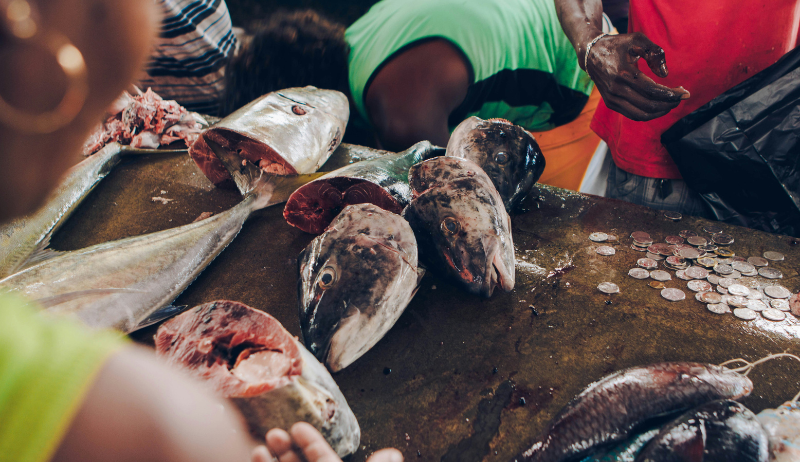Top Export Destinations for Indonesian Tuna: A Global Seafood Trade Powerhouse
October 14, 2024

Indonesia’s tuna industry is a vital part of the global seafood trade, with the country being one of the world’s largest tuna producers. Tuna is a key export commodity for Indonesia, with a diverse range of products such as fresh, frozen, and canned tuna making their way to international markets. In this blog, we explore the top export destinations for Indonesian tuna and the reasons behind the country’s success in these global markets.
1. Japan: A Premium Market for Fresh and Frozen Tuna
Japan is one of the largest consumers of tuna, particularly for high-end products like sashimi and sushi. Indonesian tuna is highly sought after in Japan due to its quality, with species like yellowfin and bigeye tuna being particularly popular.
Japan imports both fresh and frozen tuna from Indonesia. The high demand for premium-grade tuna drives significant exports, particularly in the form of loins and whole fish that are later processed for sushi-grade cuts. The proximity of Indonesia to Japan also allows for quicker transport, ensuring that the tuna reaches Japanese markets while maintaining its freshness.
2. United States: A Major Consumer of Canned and Frozen Tuna
The United States is another critical export destination for Indonesian tuna. The U.S. is one of the world’s largest consumers of canned tuna, and Indonesia plays a key role in supplying this market, particularly with skipjack and yellowfin tuna.
Indonesian tuna exports to the U.S. are not limited to canned products; frozen tuna loins and fillets are also in high demand, especially among health-conscious consumers who value tuna as a protein-rich, low-fat option. Indonesia’s well-regulated fisheries and adherence to food safety standards make it a trusted supplier for American companies.
The Marine Stewardship Council (MSC) certification obtained by many Indonesian tuna fisheries also helps the country maintain strong trade relationships with U.S. importers, who are increasingly focused on sustainable sourcing.
3. European Union: A Growing Market for Sustainability-Focused Consumers
The European Union (EU) is a significant and growing market for Indonesian tuna. European consumers have a strong preference for sustainably sourced seafood, which has pushed Indonesian tuna exporters to meet stringent EU standards, particularly regarding sustainability, traceability, and food safety.
Indonesia’s focus on sustainable tuna fishing practices, such as pole-and-line fishing and avoiding overfished stocks, aligns well with EU market demands. Countries like Germany, Spain, and Italy are key importers of both canned and frozen tuna from Indonesia.
Indonesia has also benefited from preferential trade agreements with the EU, such as the Generalized Scheme of Preferences (GSP), which allows for reduced tariffs on certain tuna products, boosting export competitiveness.
4. Thailand: A Tuna Processing Hub
While Thailand is a competitor in the global tuna industry, it is also one of the top importers of Indonesian tuna. Thailand is a major processing hub, with a well-established canning industry. Indonesian tuna, particularly skipjack, is often sent to Thailand for further processing before being re-exported to markets around the world.
The strong trade relationship between Indonesia and Thailand highlights the interconnected nature of the global seafood supply chain. Indonesia’s ability to supply raw tuna to Thailand’s processing plants ensures that both countries benefit from this partnership.
5. Middle East: A Growing Consumer Market
Countries in the Middle East, such as Saudi Arabia, the United Arab Emirates, and Kuwait, are becoming increasingly important export destinations for Indonesian tuna. The region’s growing demand for high-quality, protein-rich seafood products has opened up new opportunities for Indonesian exporters.
Frozen tuna and canned tuna products are particularly popular in this region, where seafood consumption is rising due to both dietary preferences and an increasing focus on healthy, nutrient-rich foods. Indonesia’s ability to meet the halal certification requirements also gives it a competitive edge in Middle Eastern markets.
6. China: An Emerging Market with High Potential
China’s rapidly expanding middle class and growing seafood consumption make it an attractive market for Indonesian tuna. Although China imports large amounts of tuna from other nations, Indonesia has begun to carve out a niche, particularly for frozen and canned products.
China’s seafood market is becoming more diverse, with consumers seeking out higher-quality products, including fresh and frozen tuna for domestic consumption. Indonesia’s competitive pricing and proximity make it a natural supplier for China’s growing seafood demand.
7. Other Southeast Asian Nations
Indonesia also exports tuna to neighboring Southeast Asian countries such as Malaysia, Vietnam, and Singapore. These countries import tuna in various forms, from frozen and fresh tuna for local consumption to raw materials for processing and re-export.
Southeast Asia is a growing market for Indonesian tuna, thanks to the region’s high seafood consumption and expanding middle-class populations. Proximity, shared regional trade agreements, and similar culinary traditions help boost Indonesia’s tuna exports to these neighboring countries.
Conclusion
Indonesia’s tuna industry continues to thrive on the global stage, with export destinations spanning across the globe. From the premium markets in Japan to the growing demand in the Middle East and the United States, Indonesia’s tuna products are a staple in international seafood trade.
As sustainability and food safety become more important to global consumers, Indonesia’s commitment to responsible fishing practices and maintaining high standards will ensure that it remains a top player in the global tuna market. By continuing to meet the diverse demands of these export destinations, Indonesia’s tuna industry is set for sustained growth in the years to come.

 English
English Chinese
Chinese